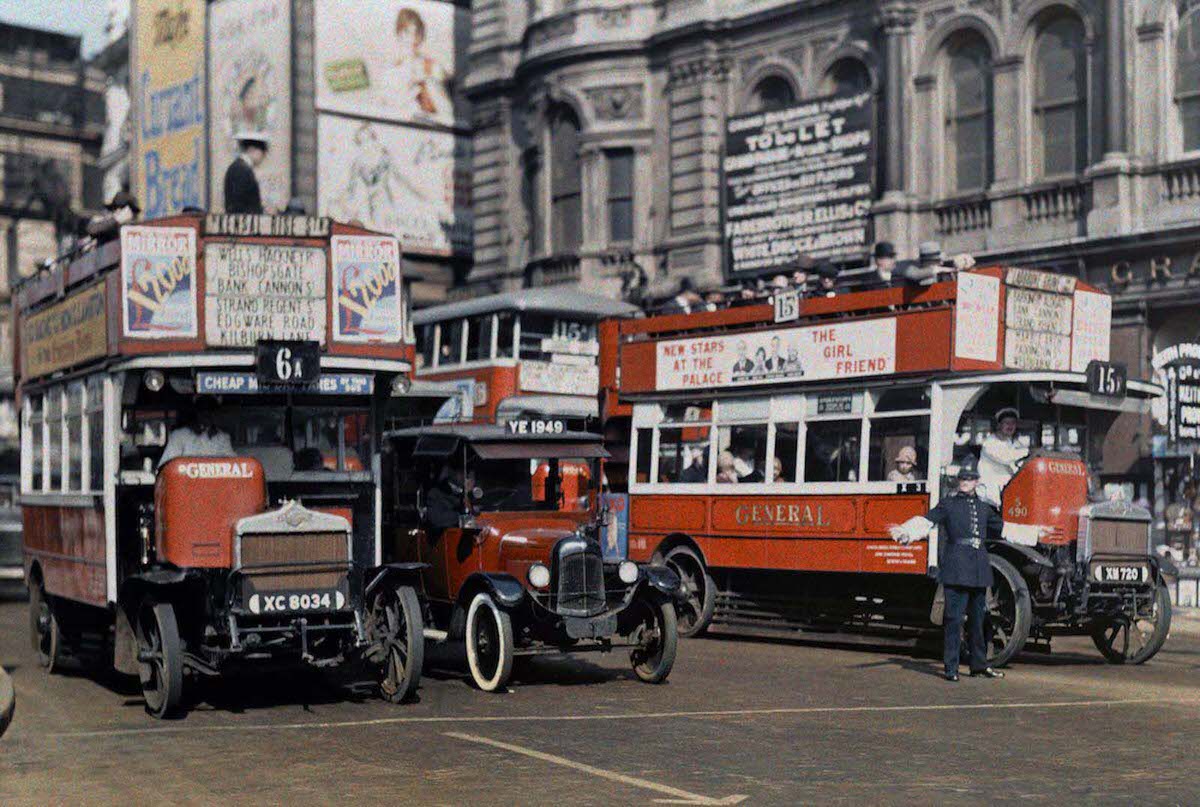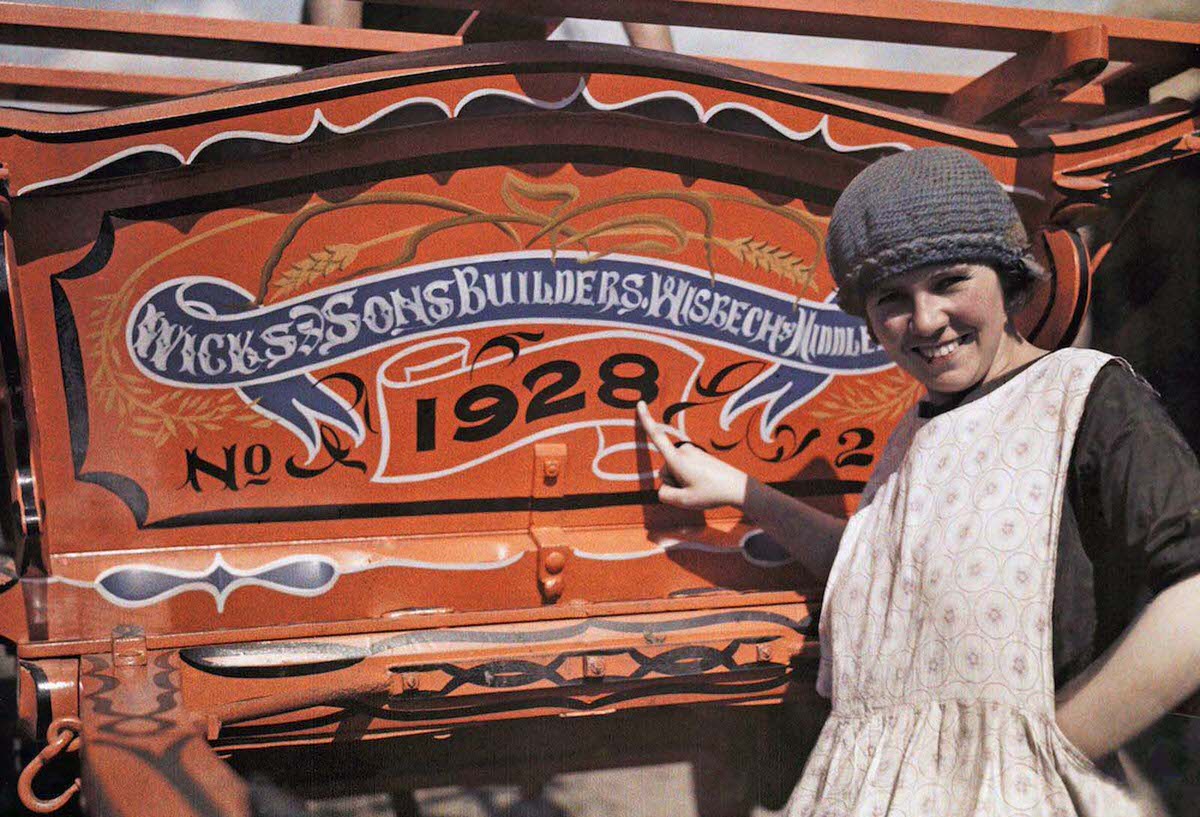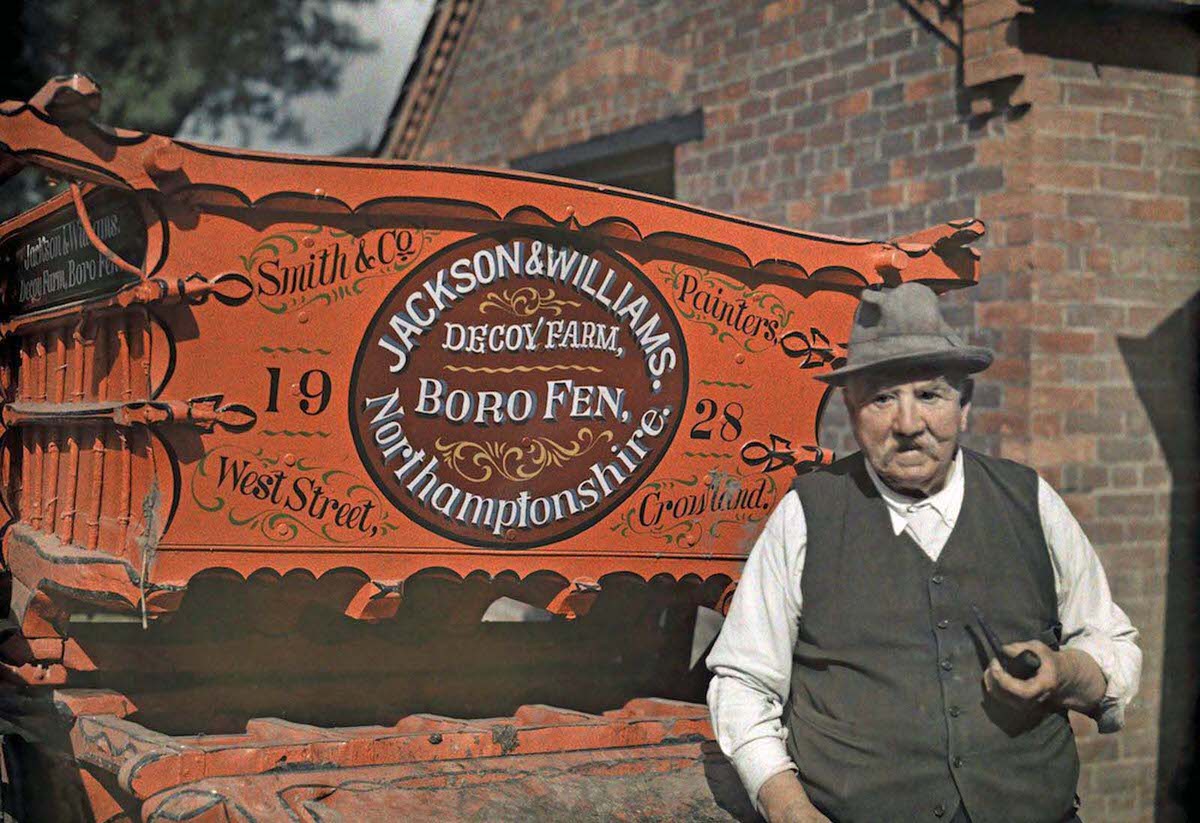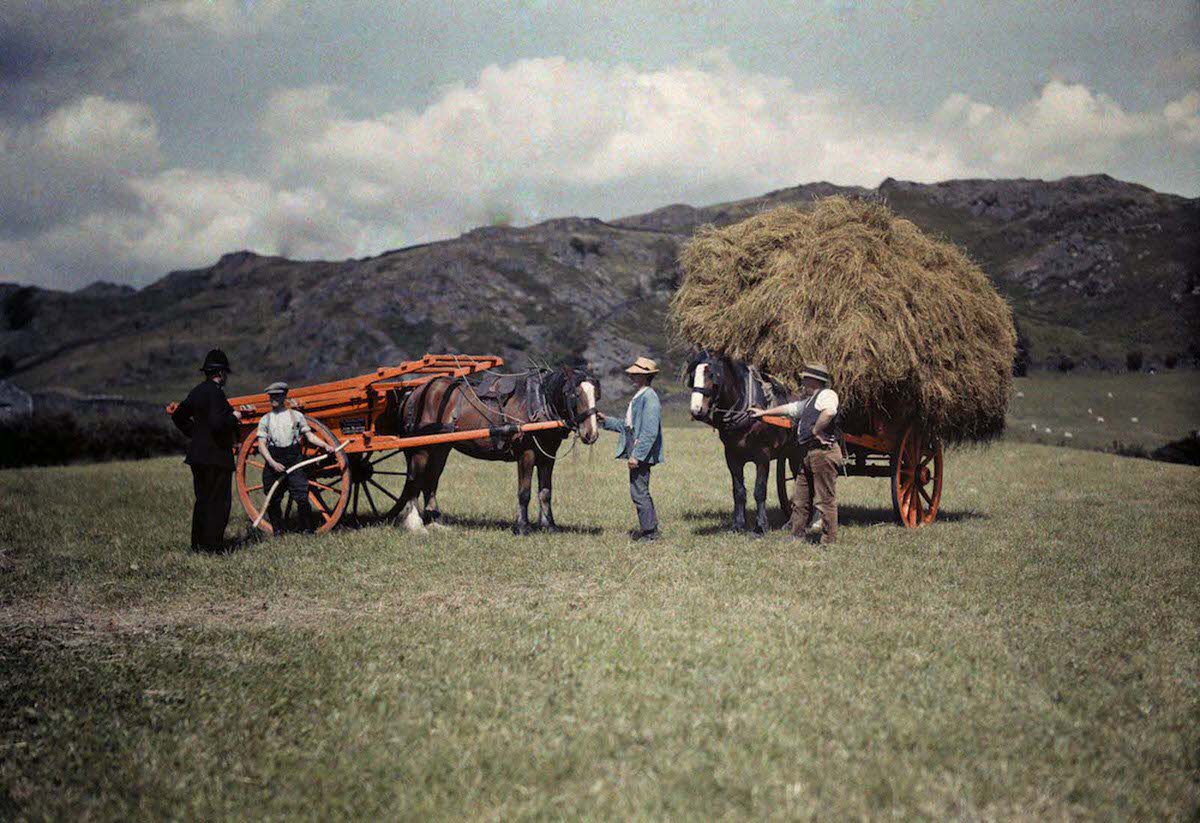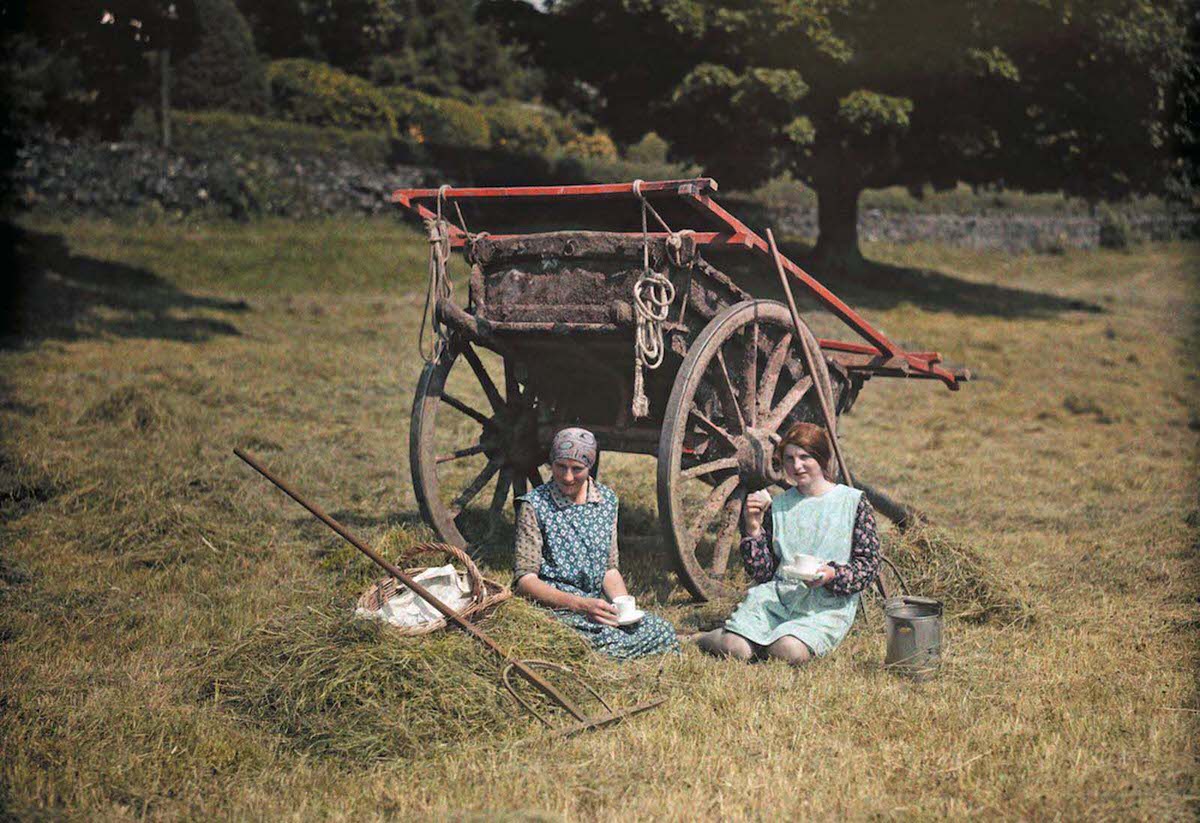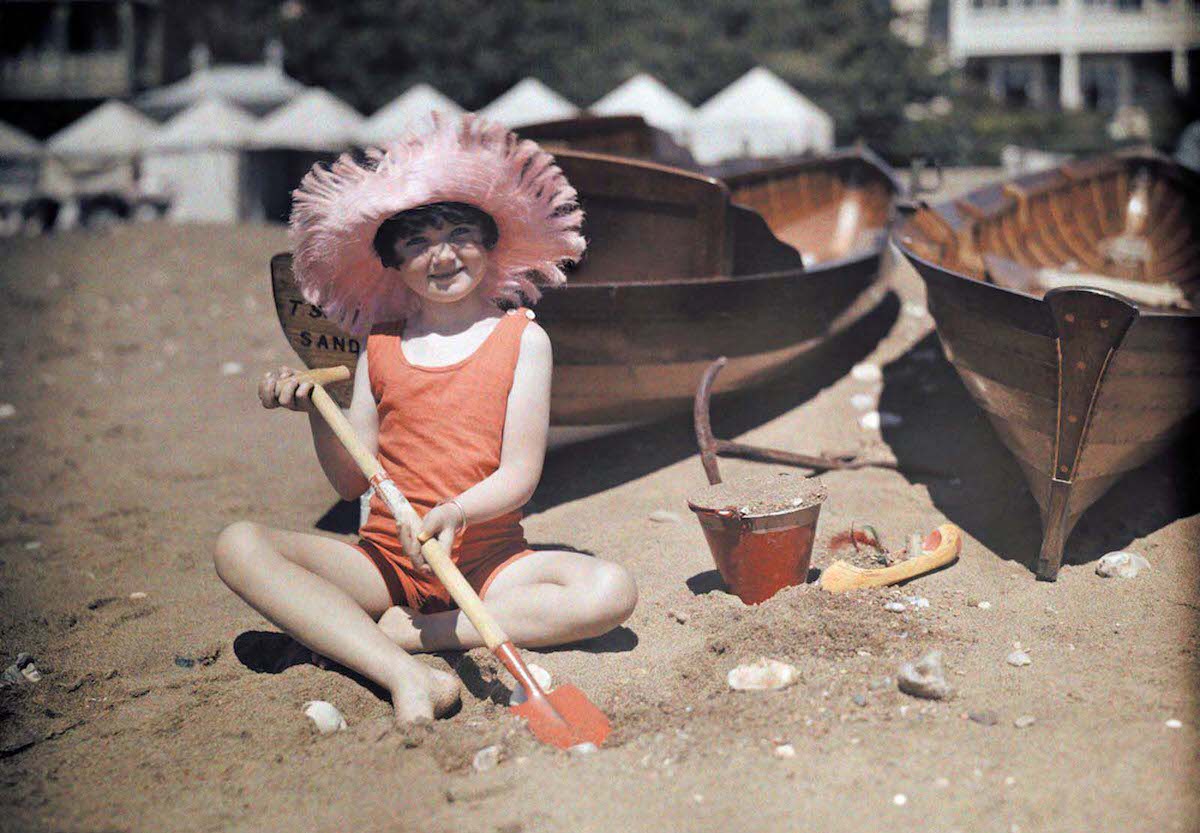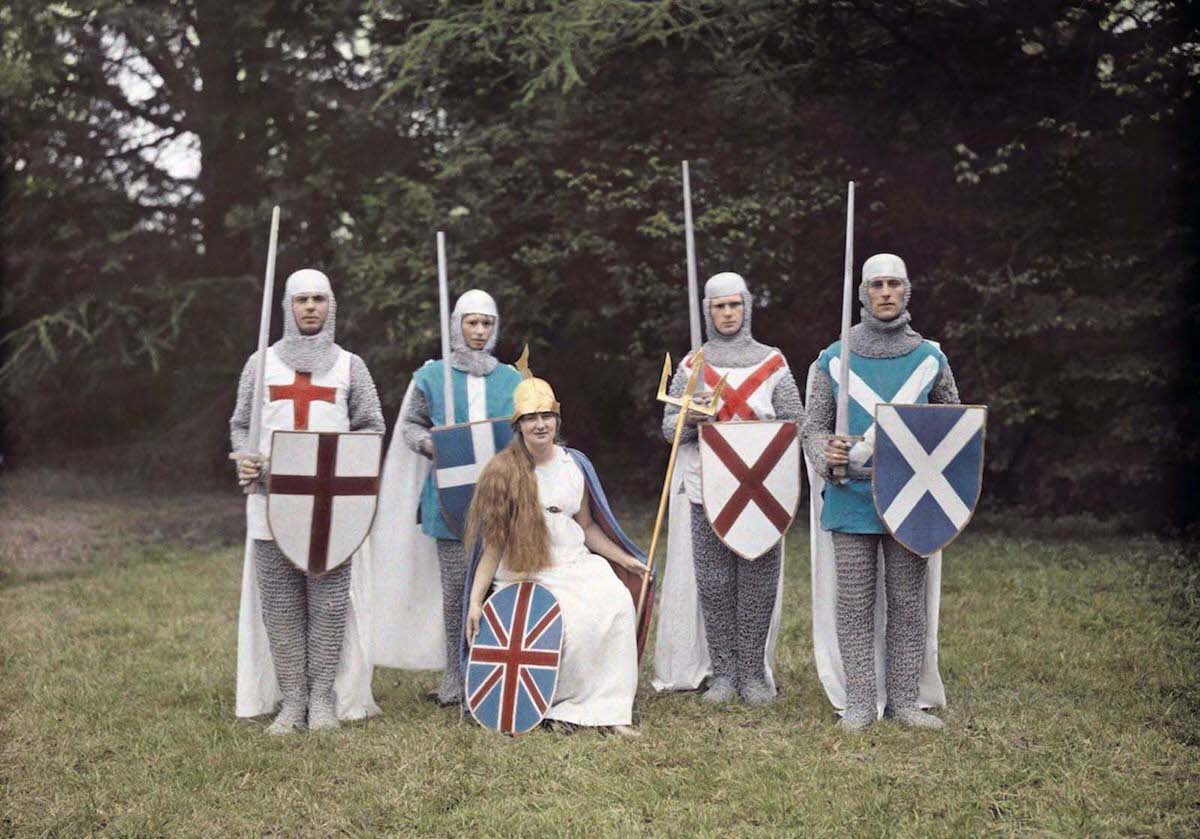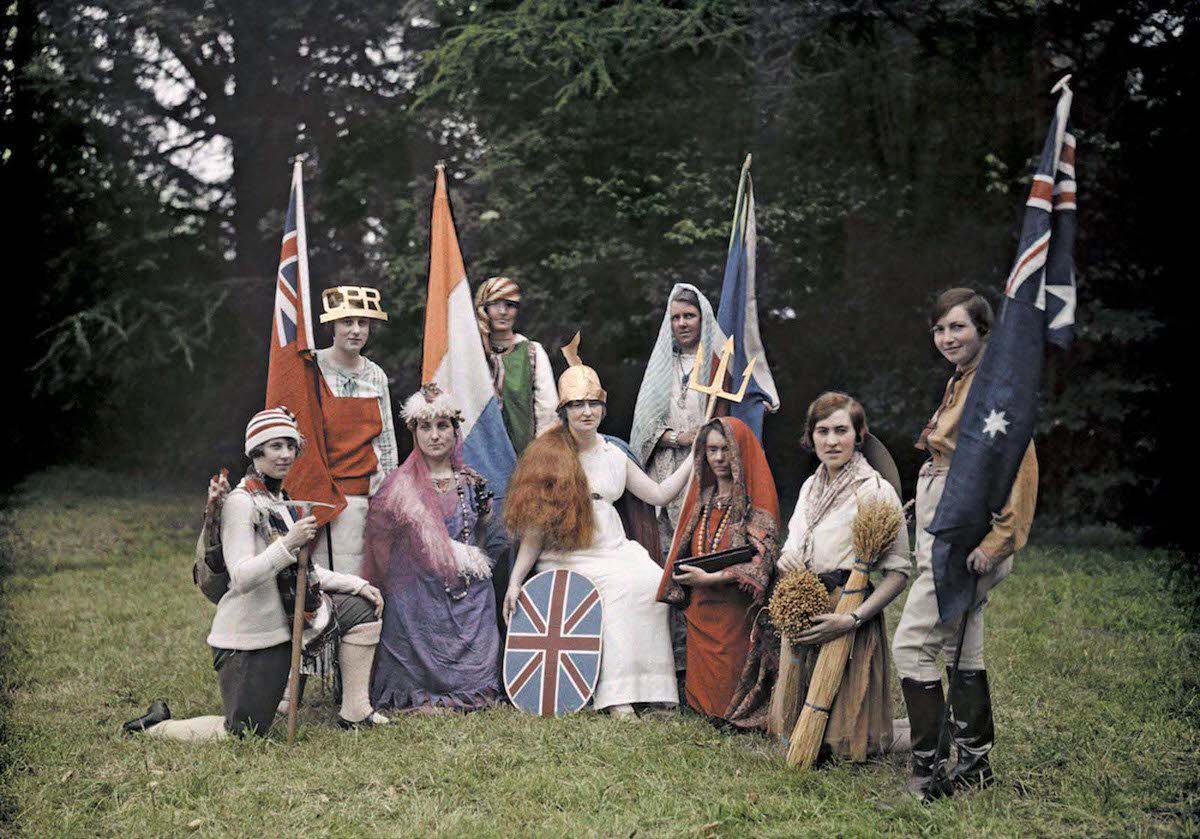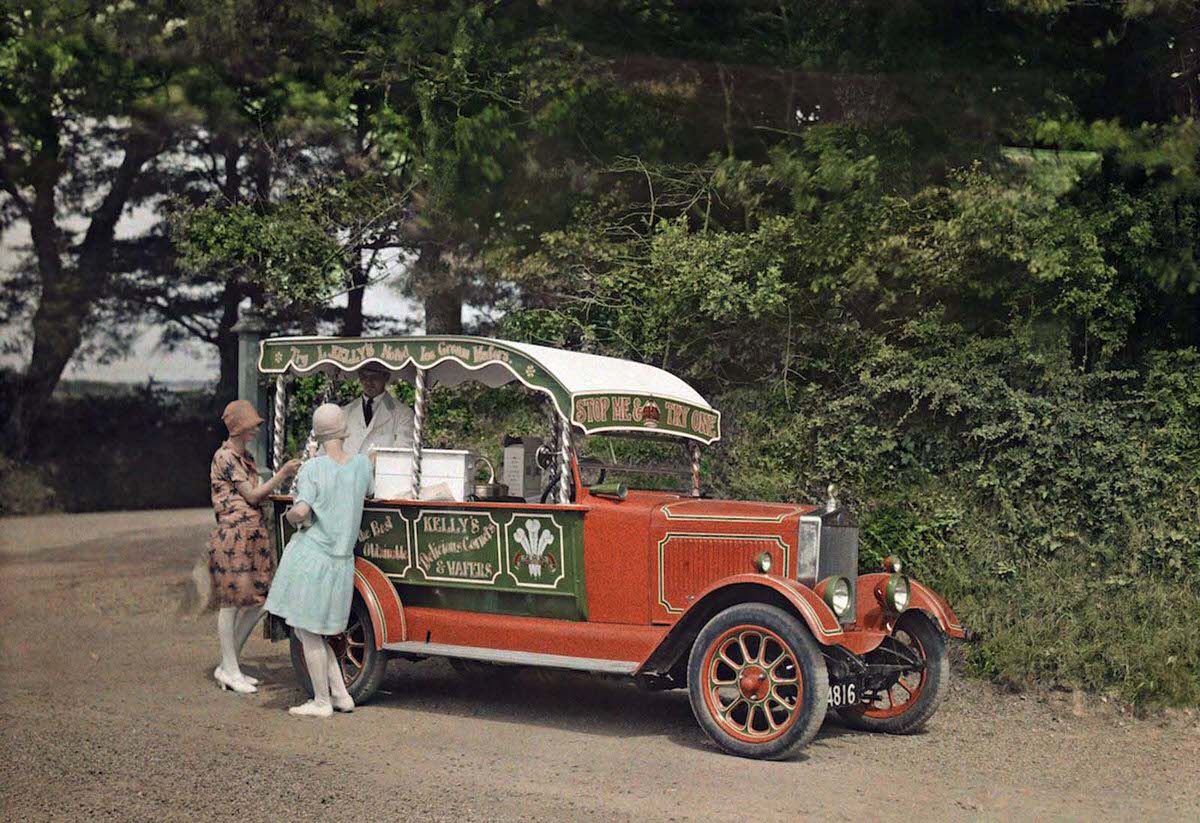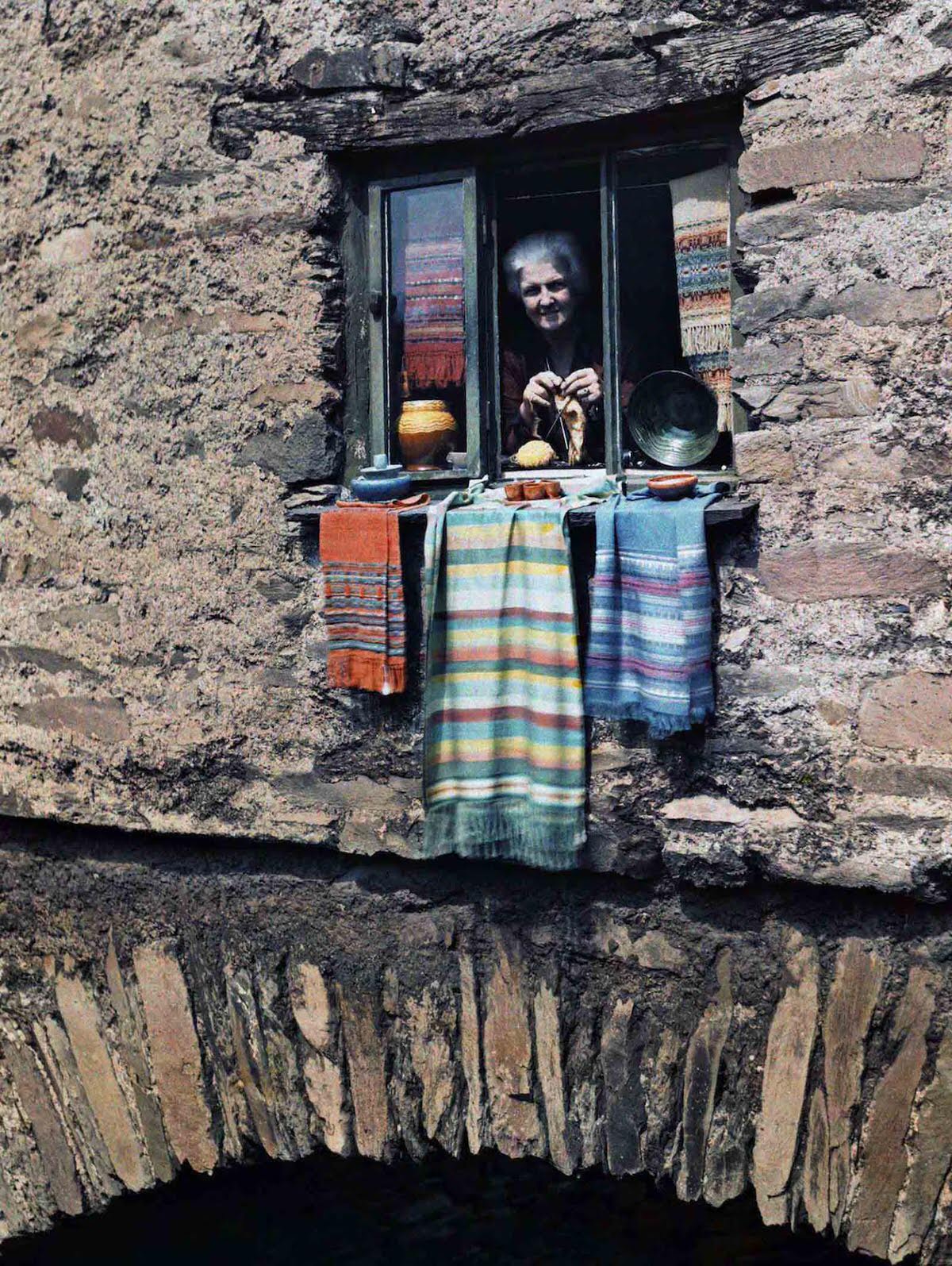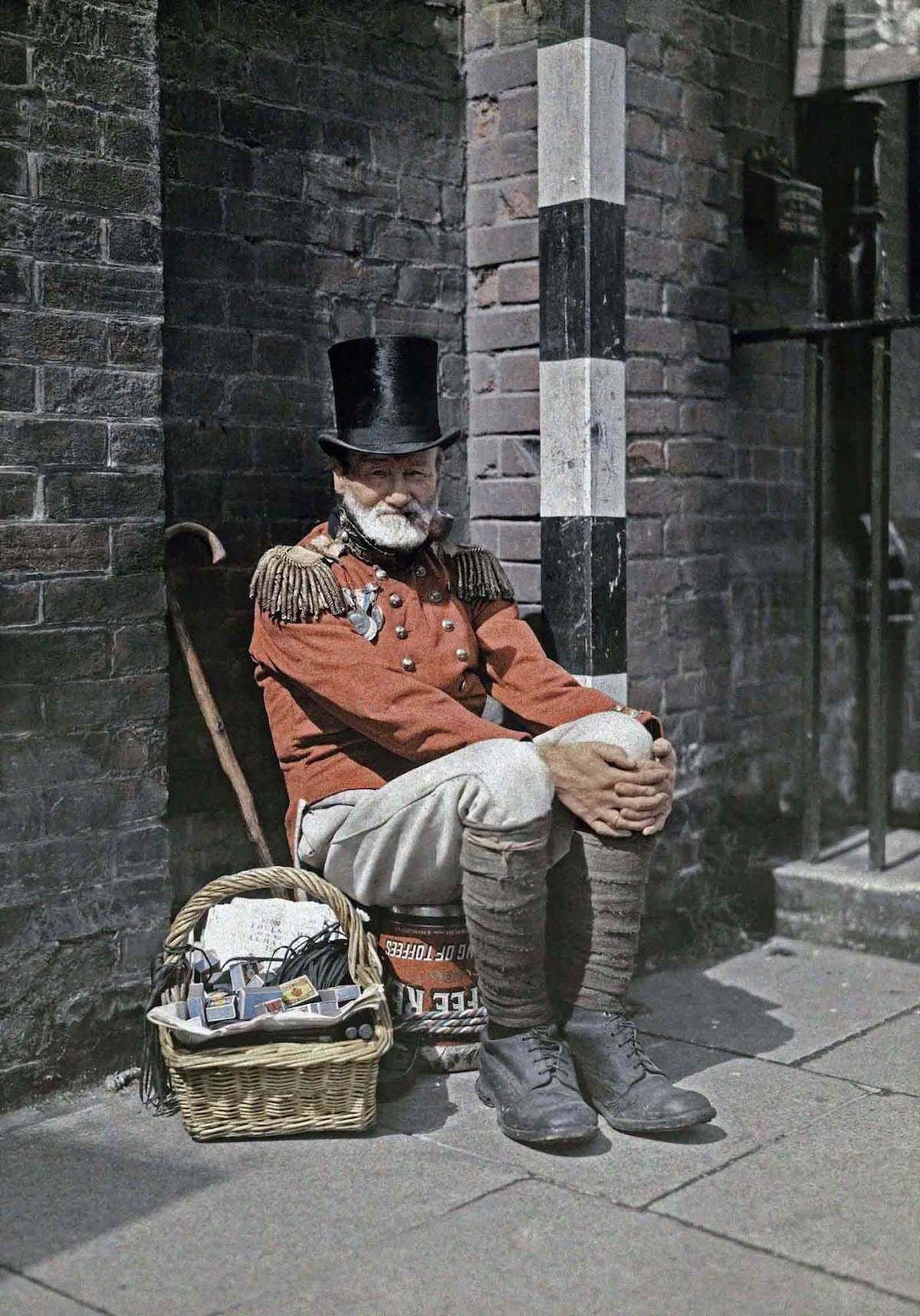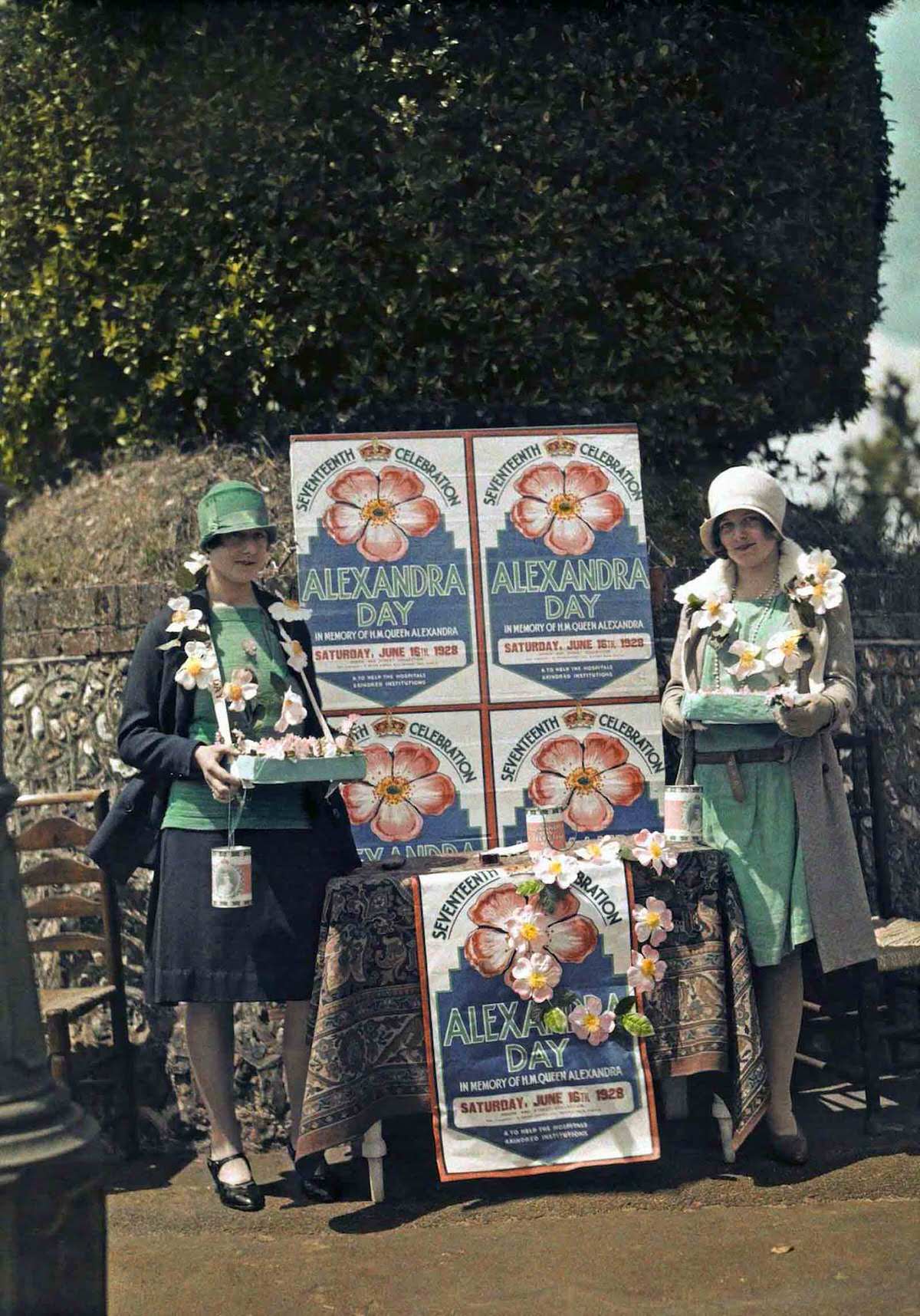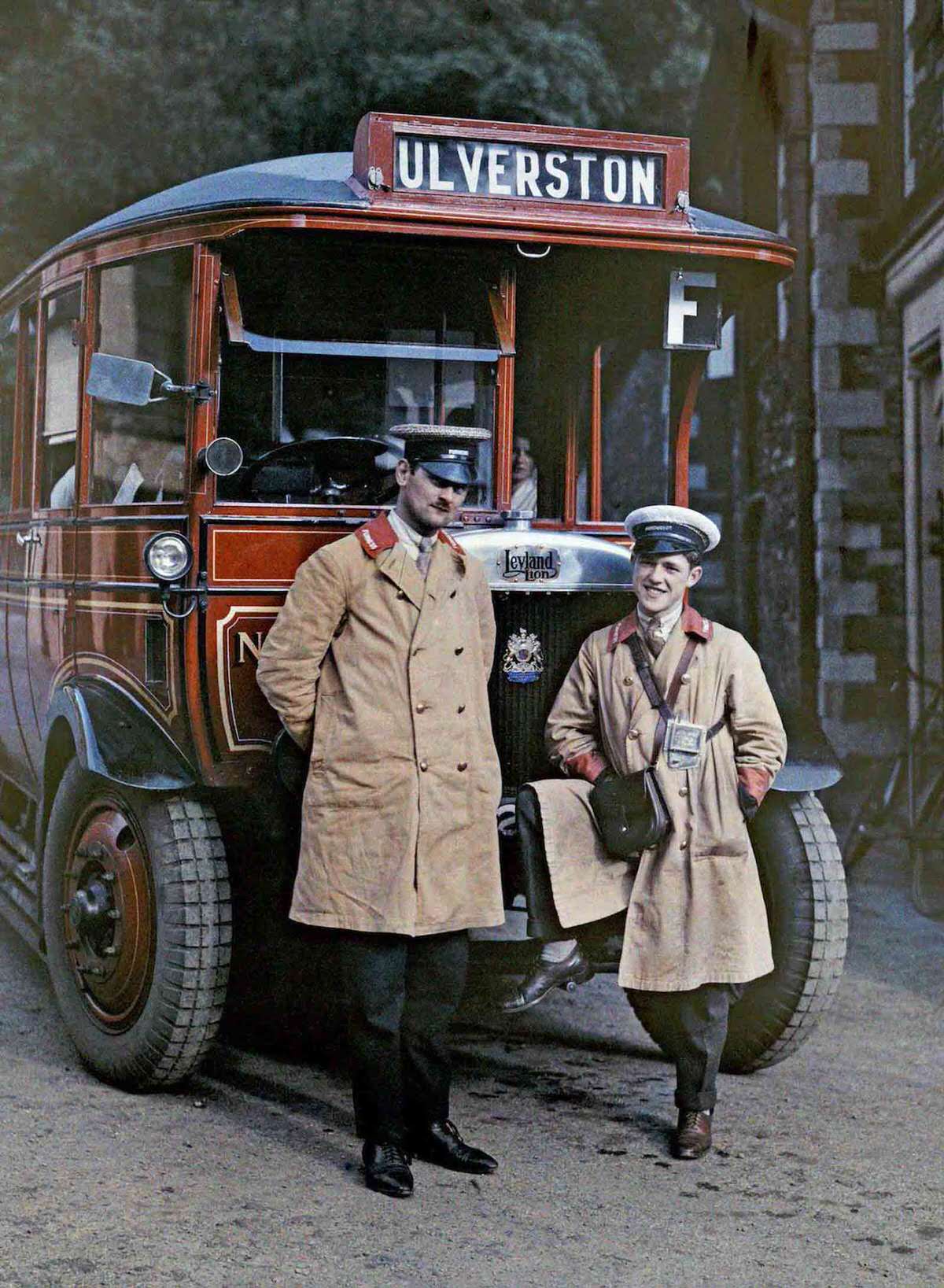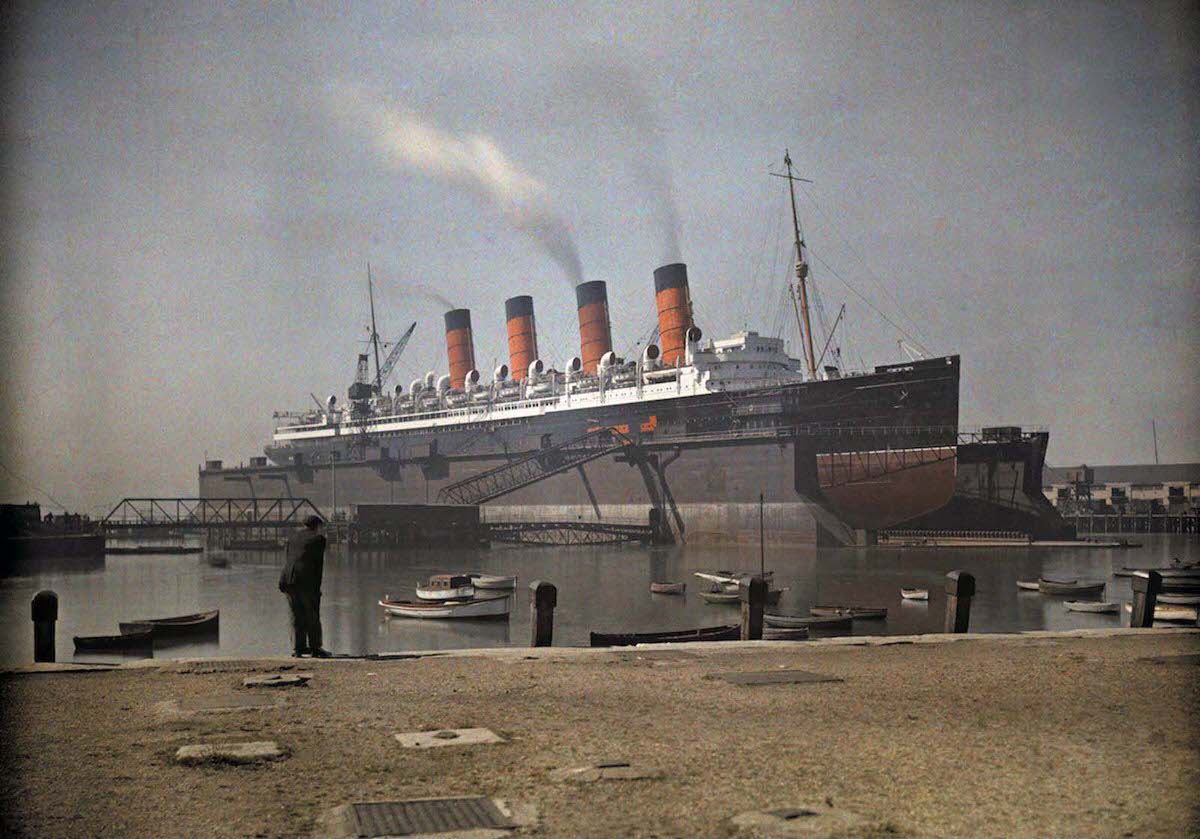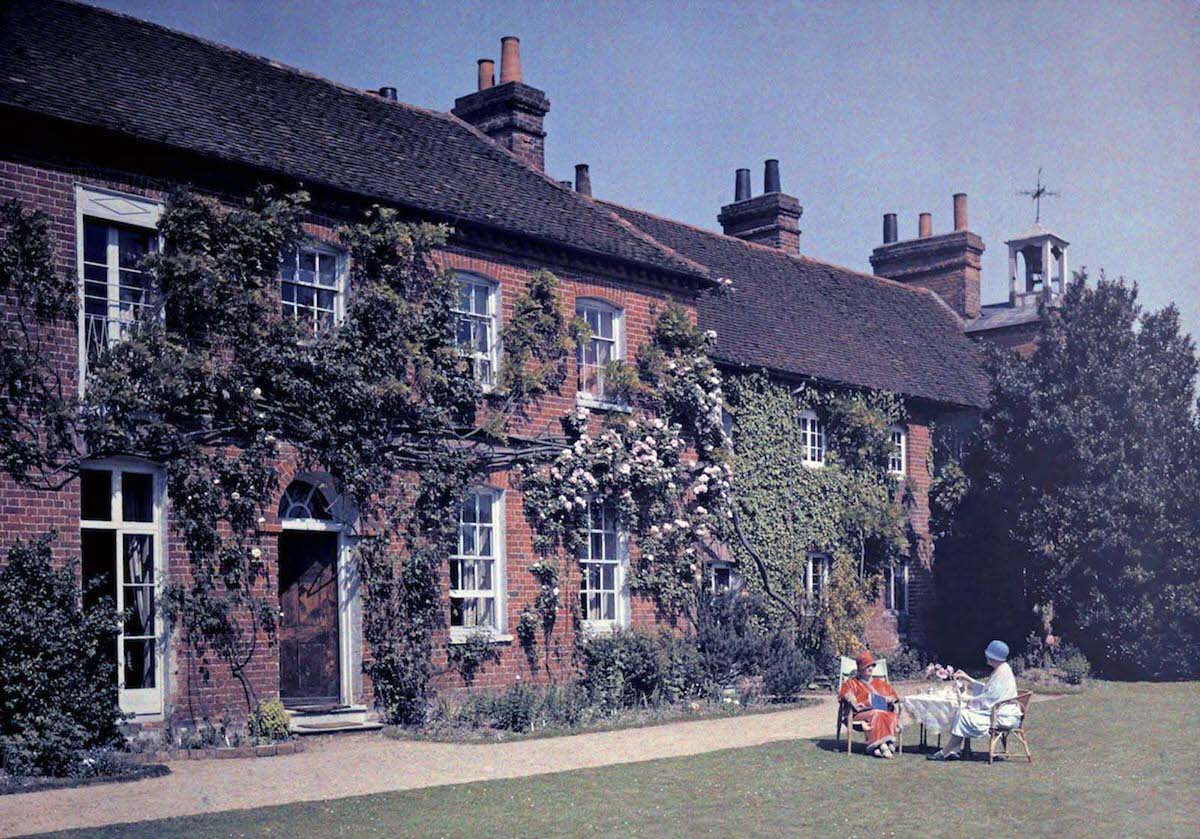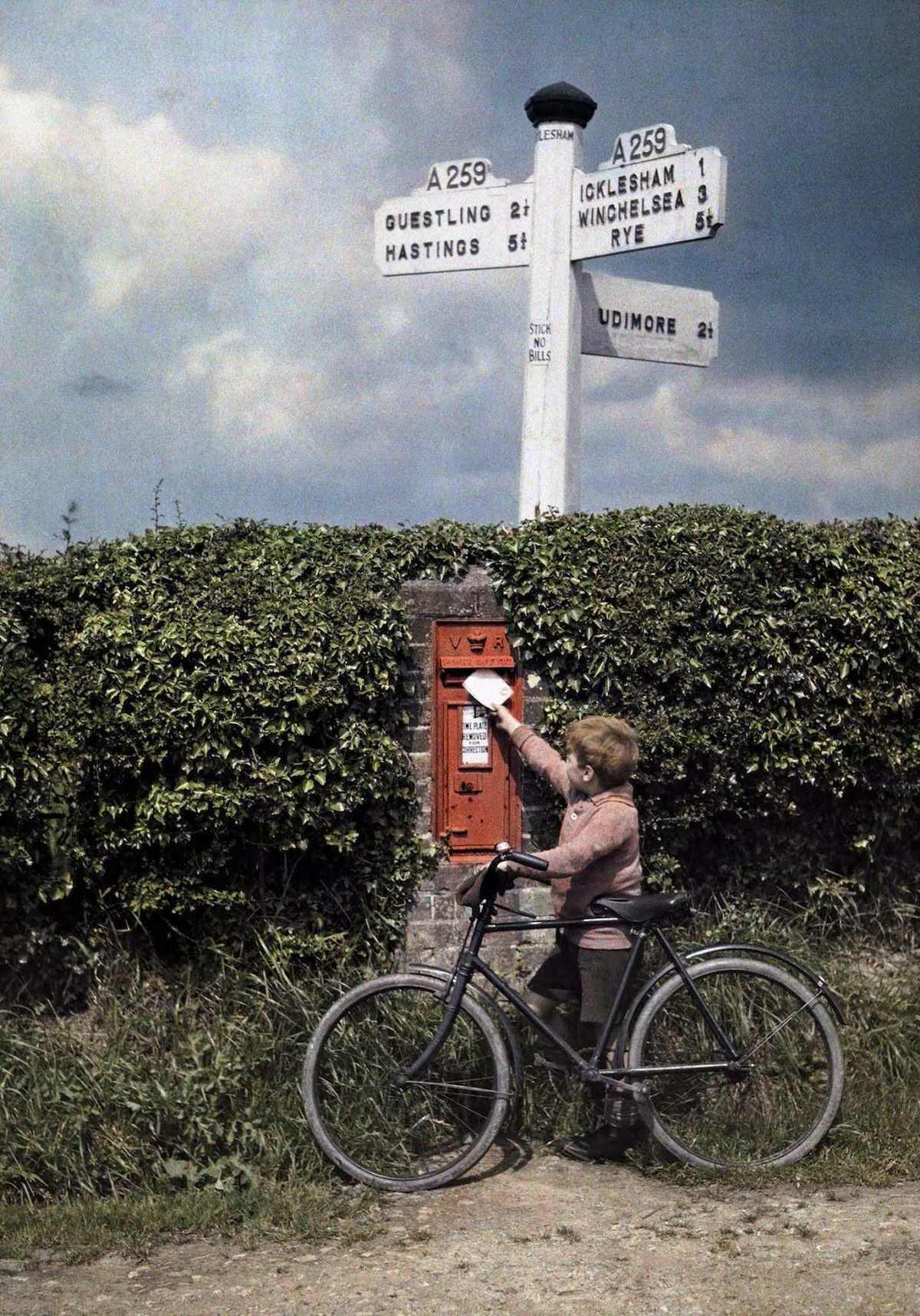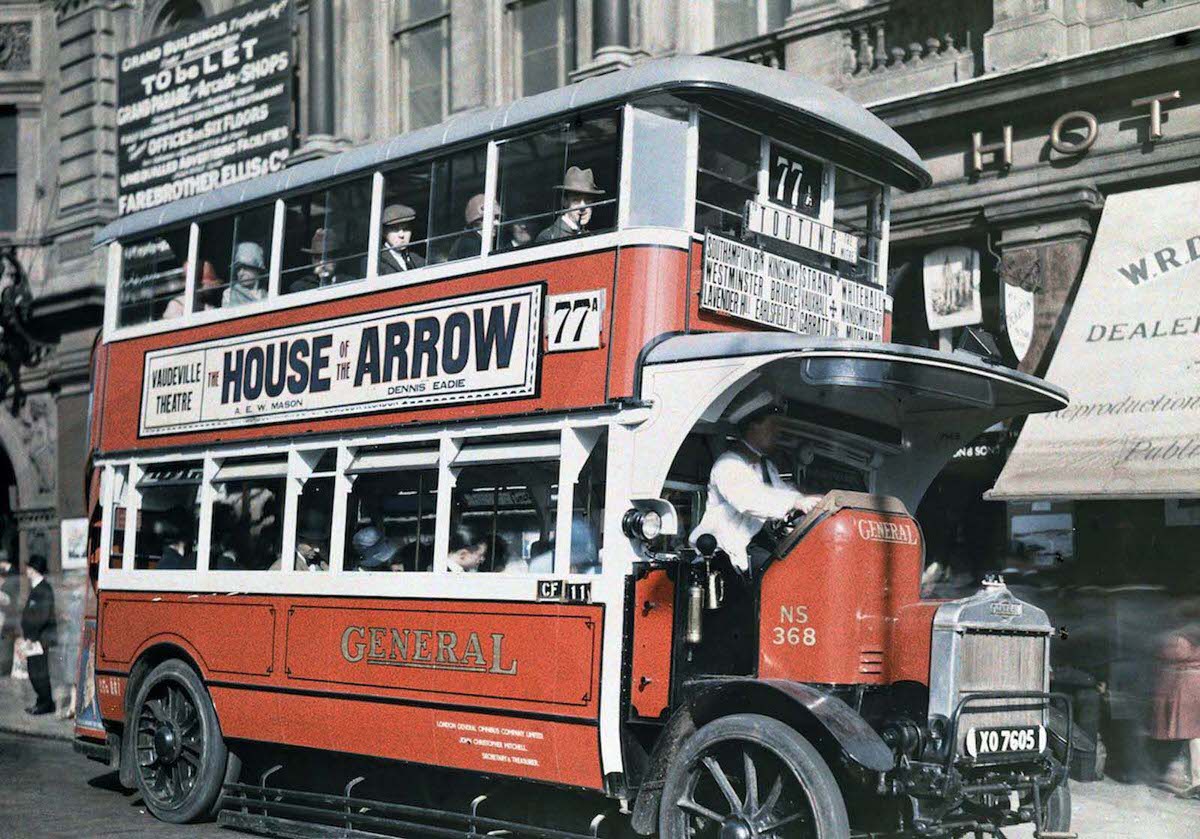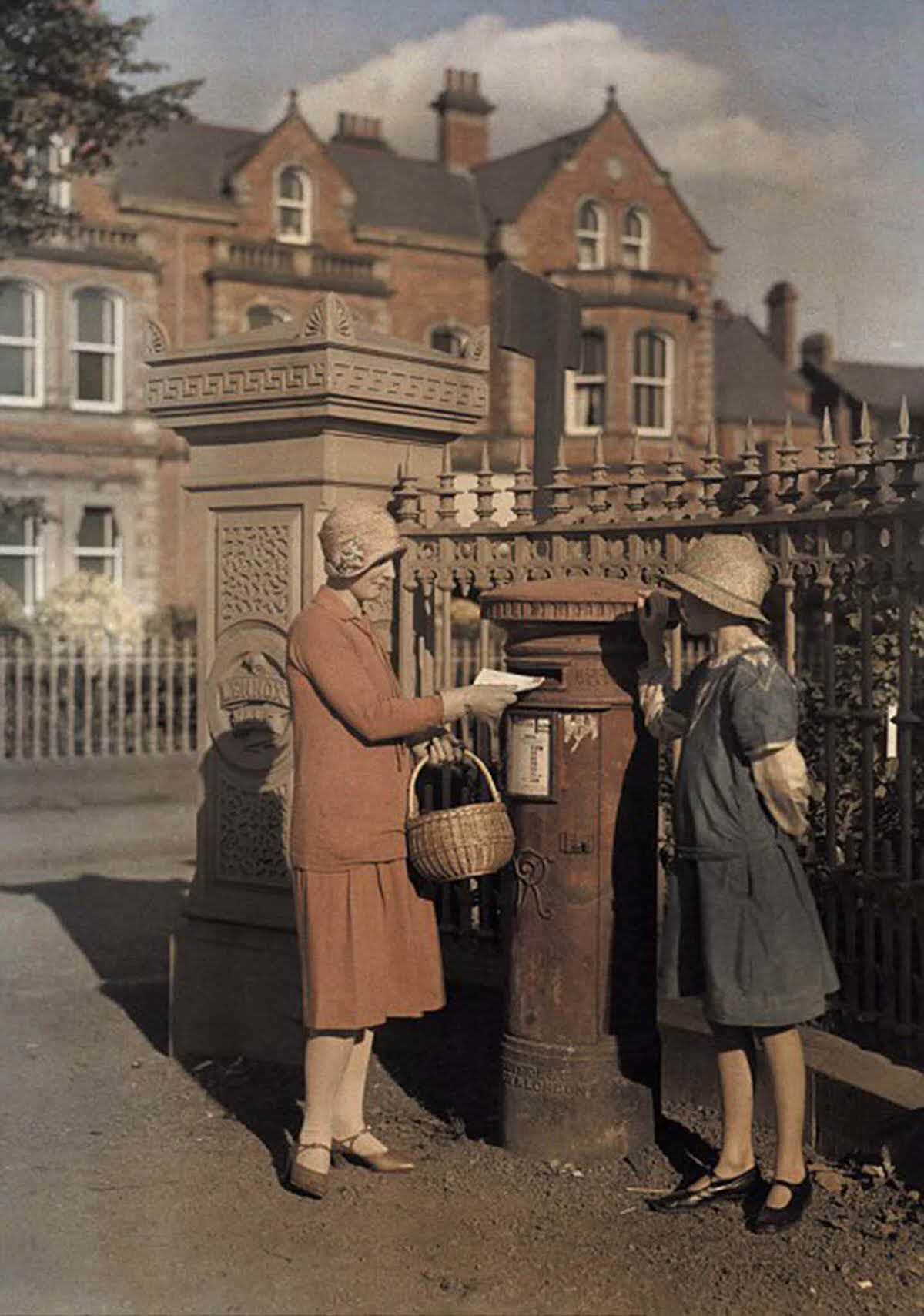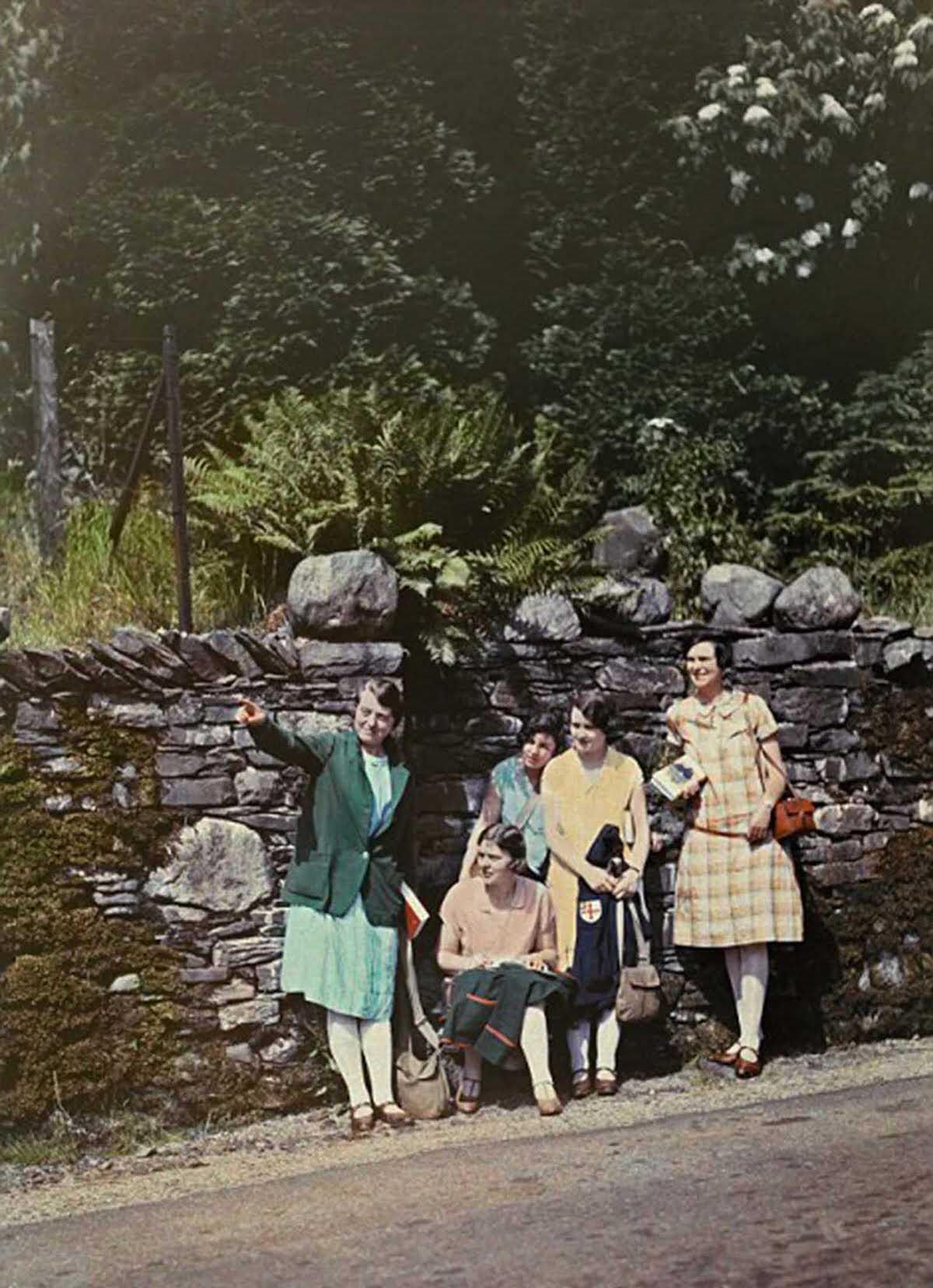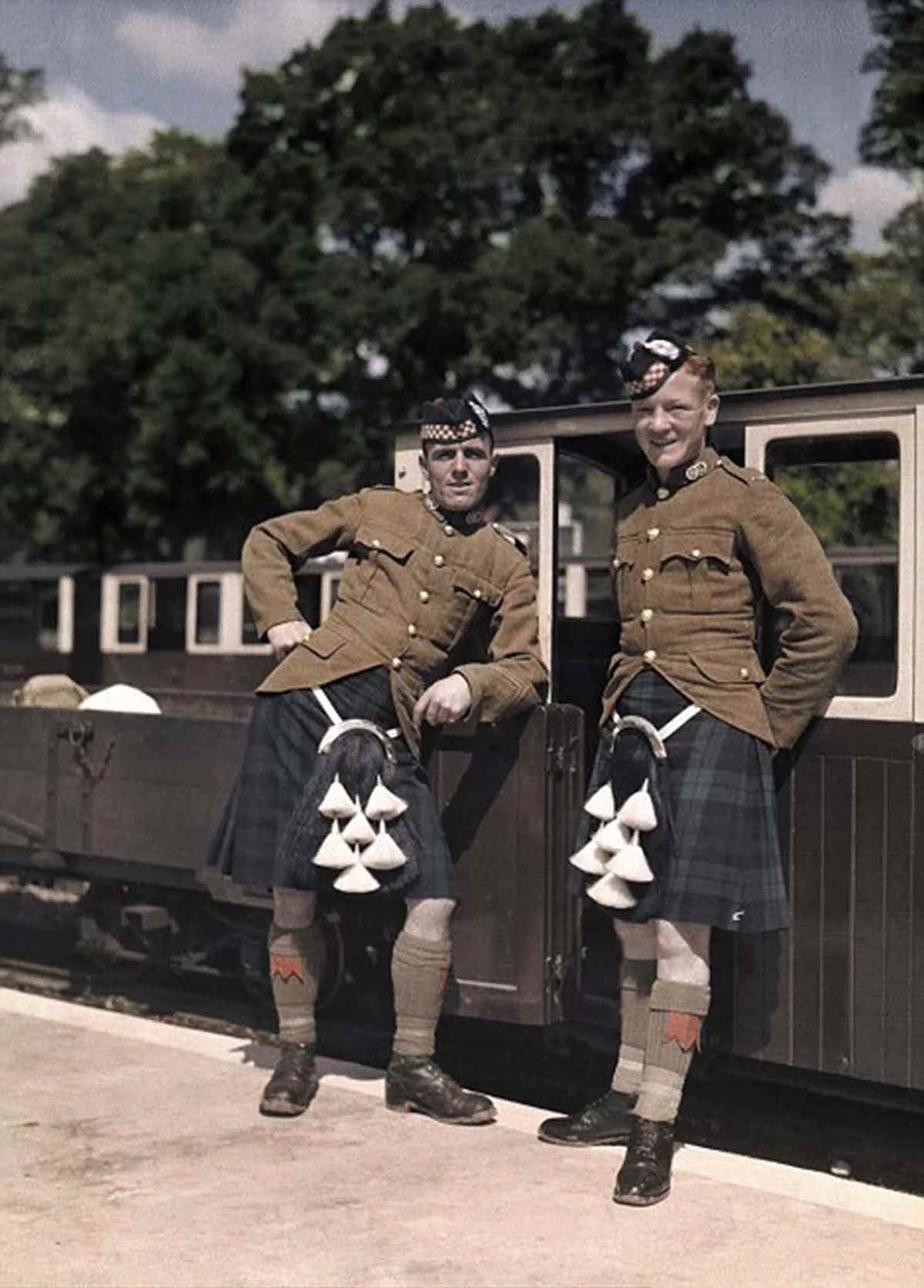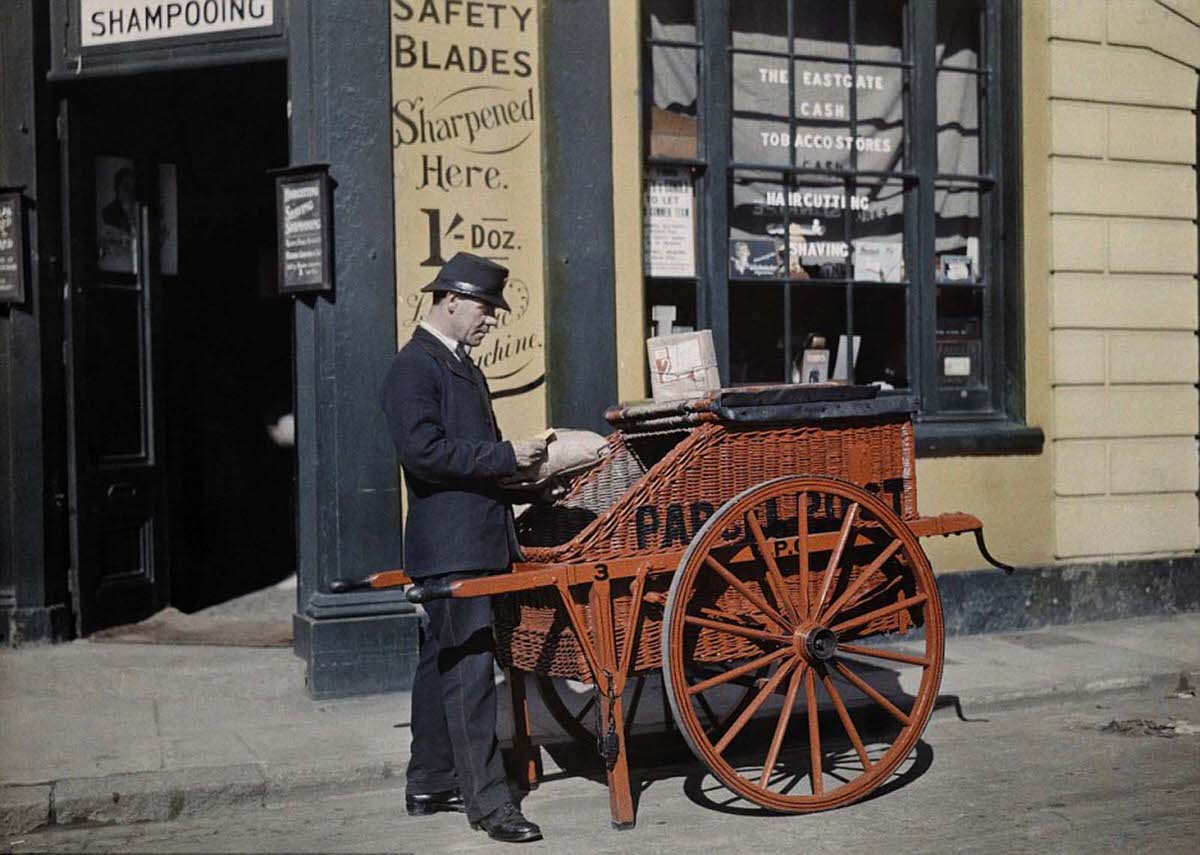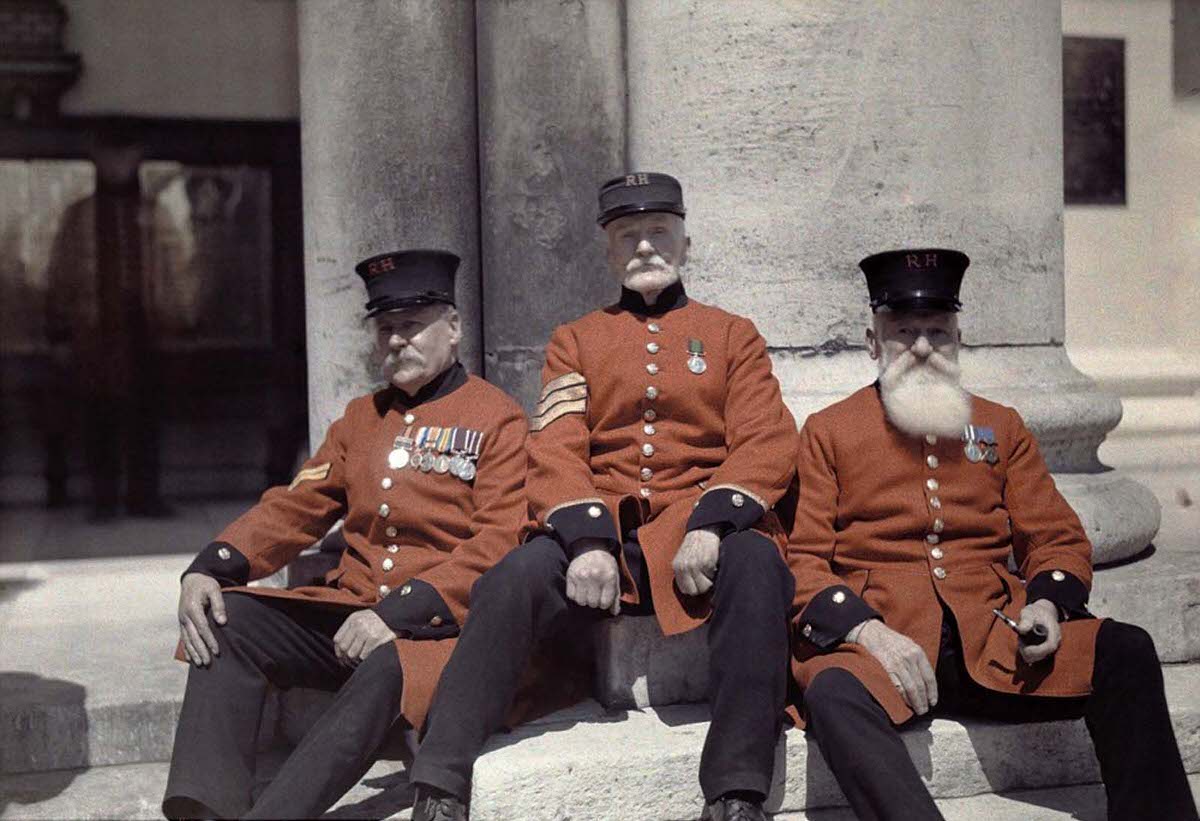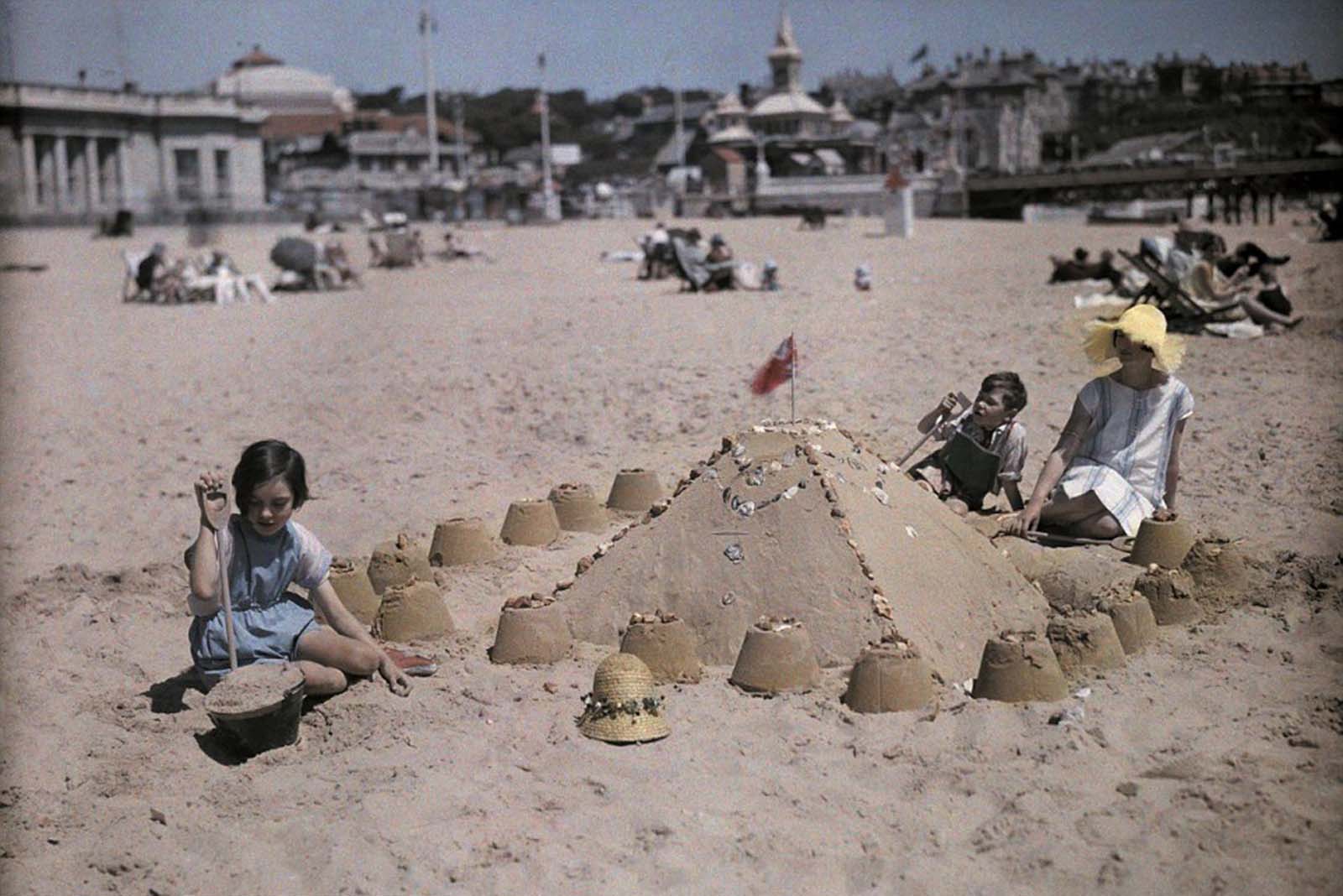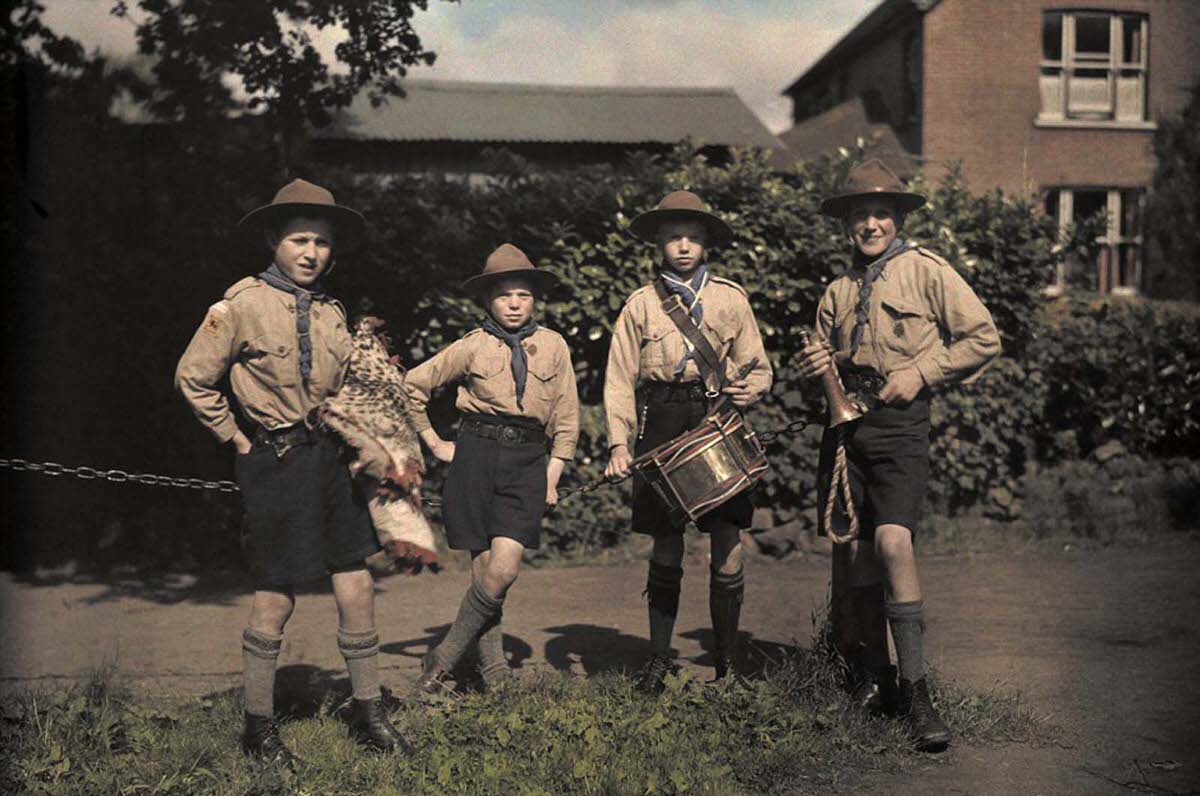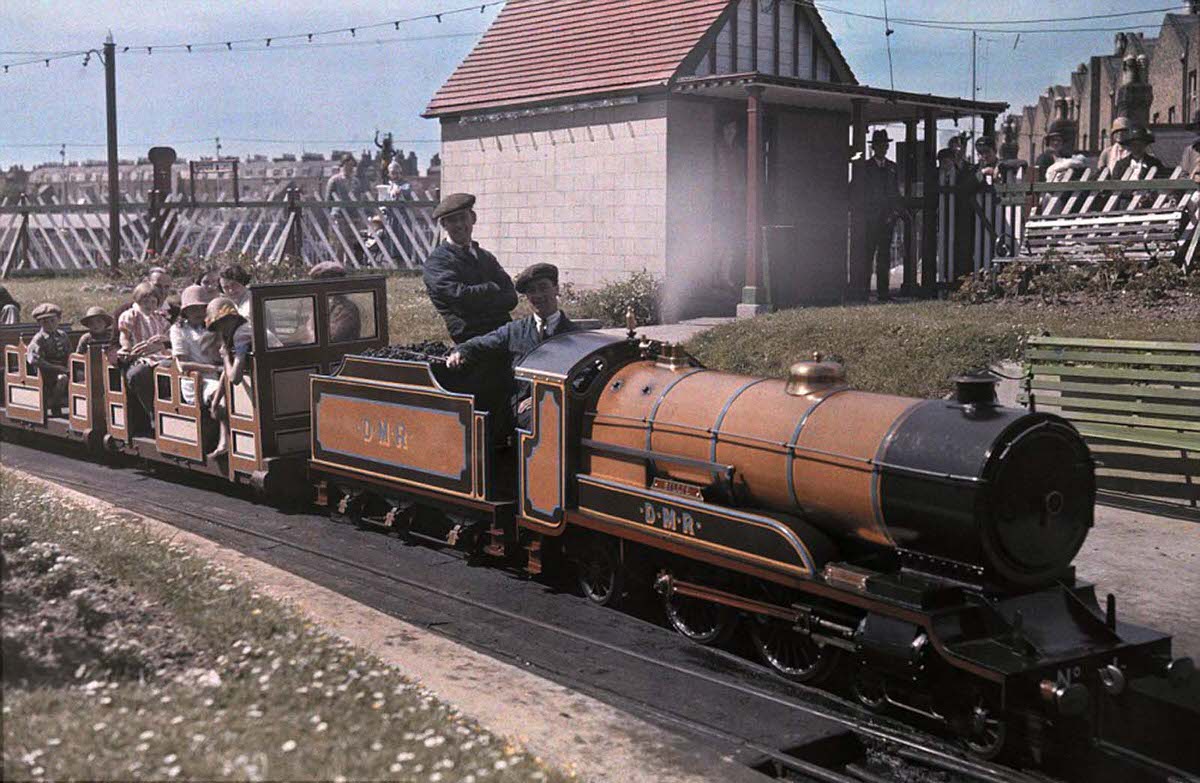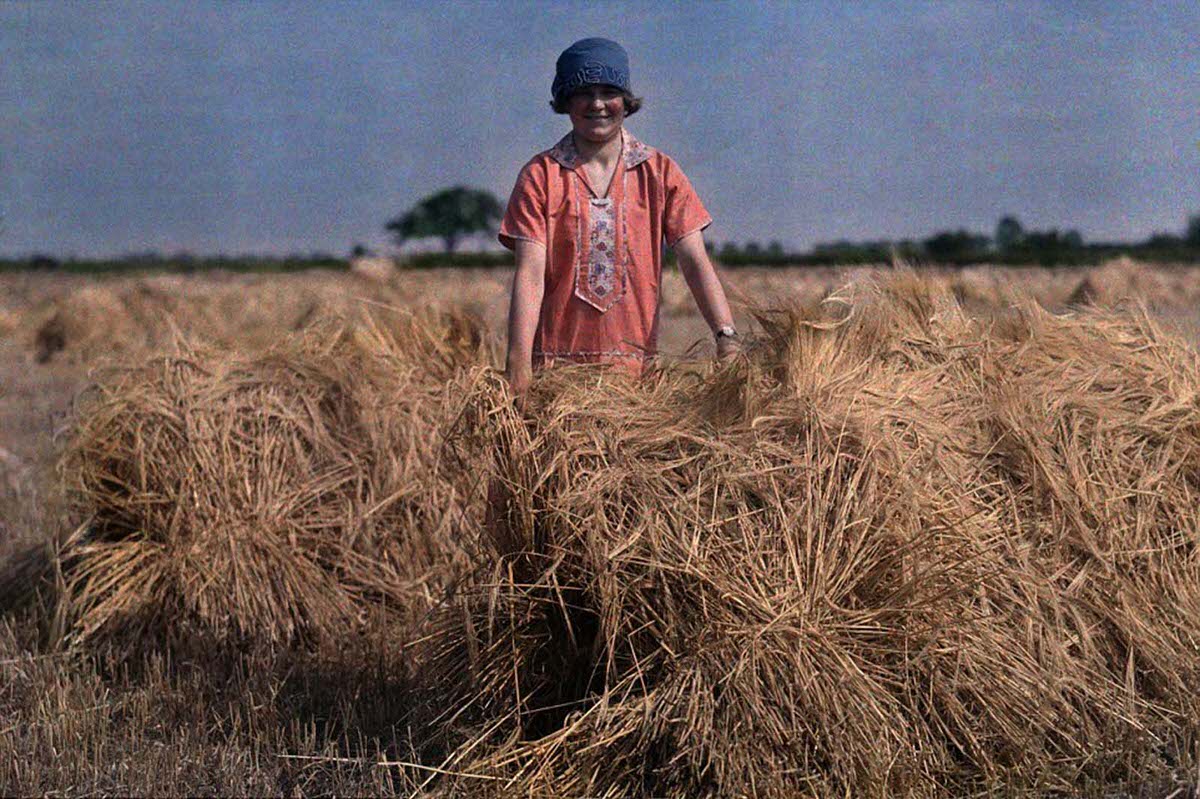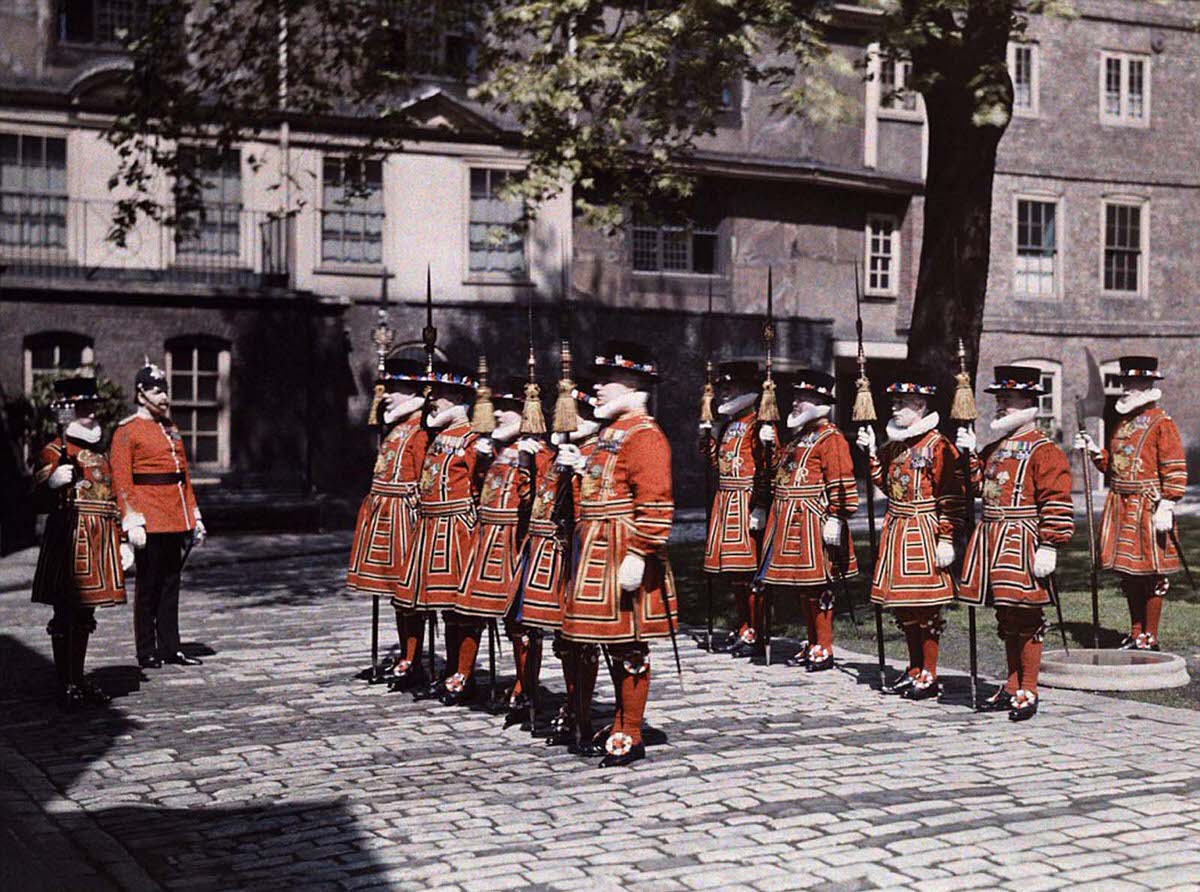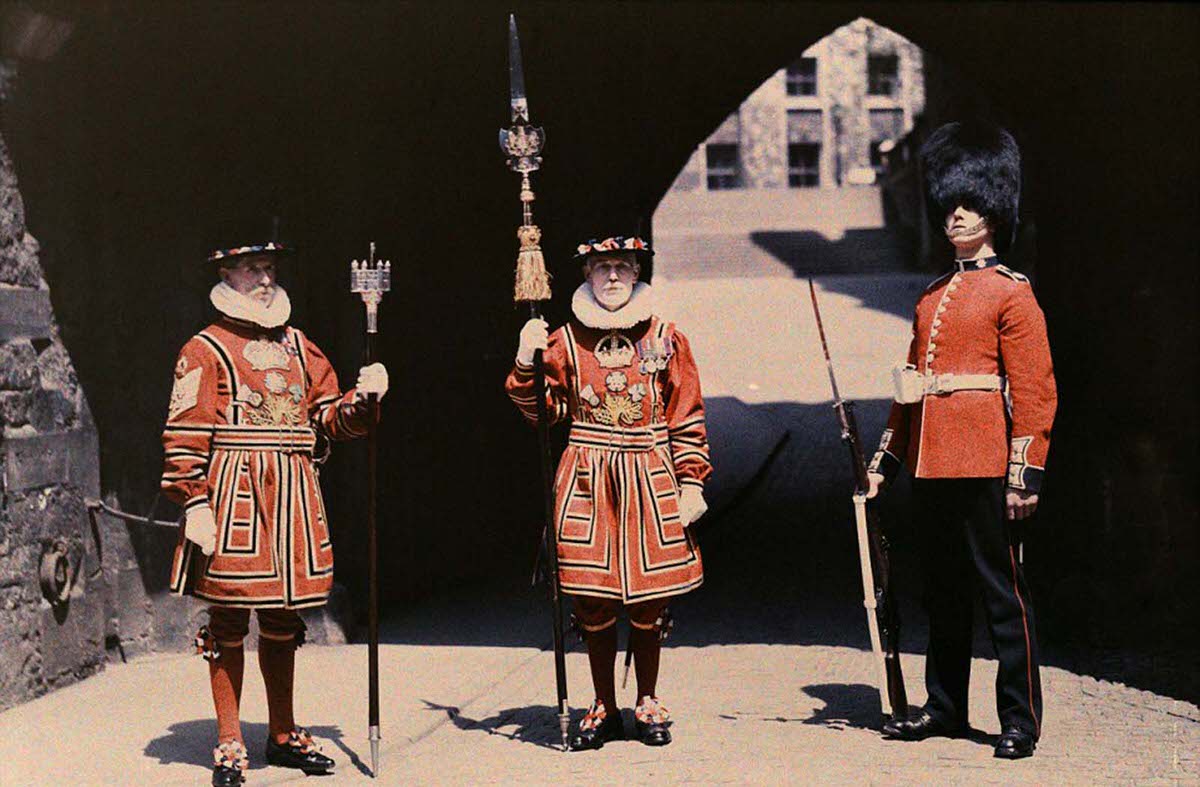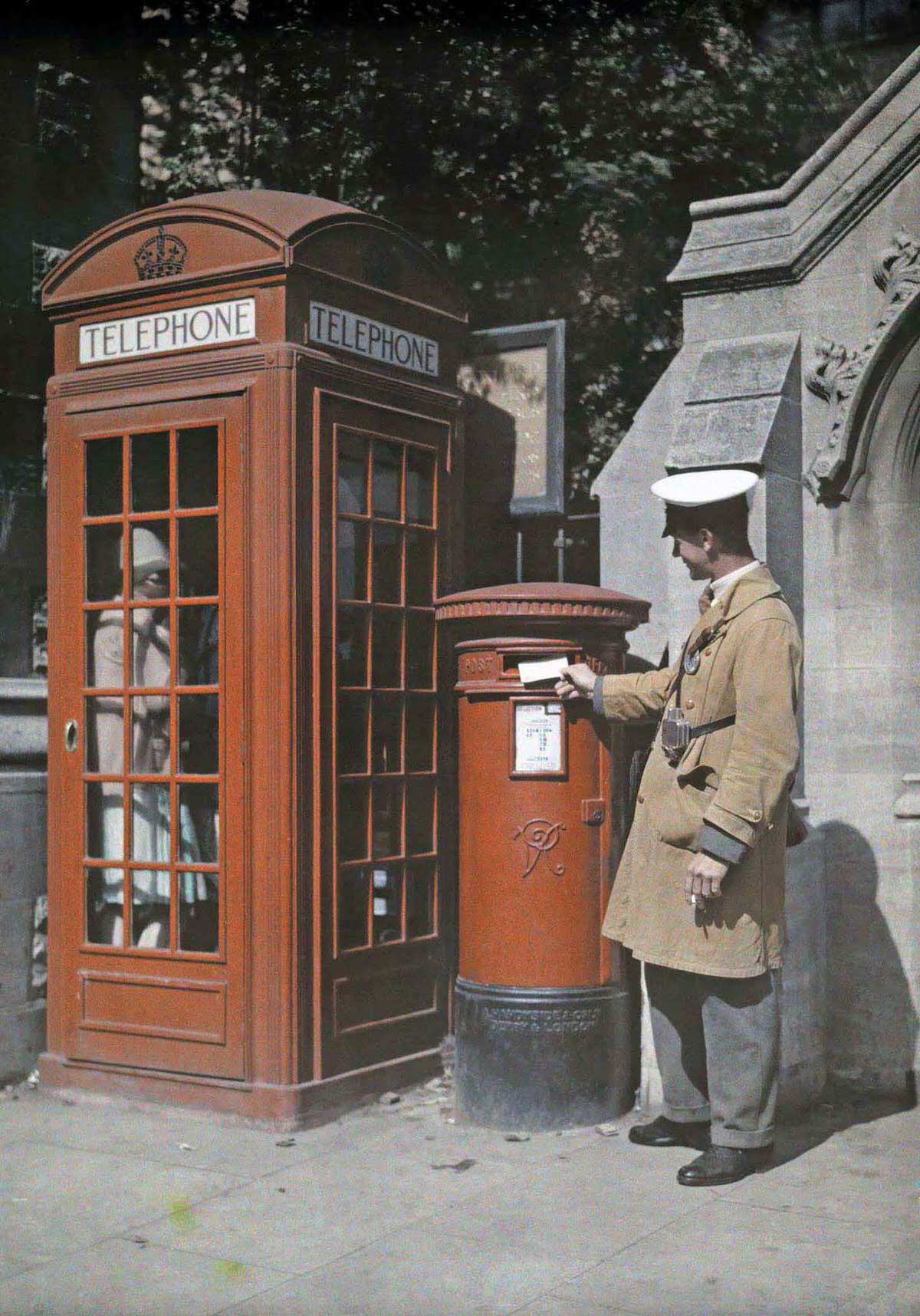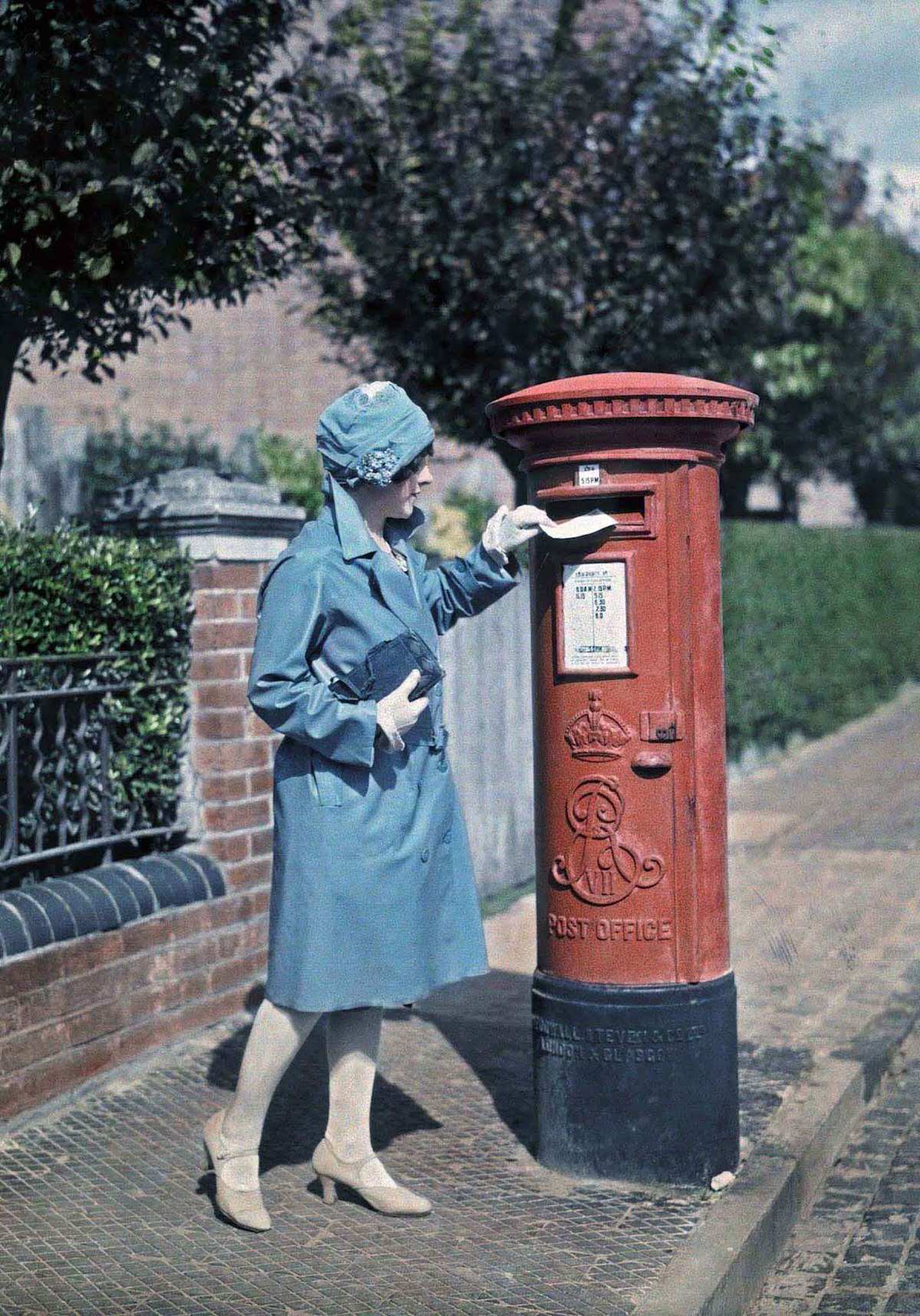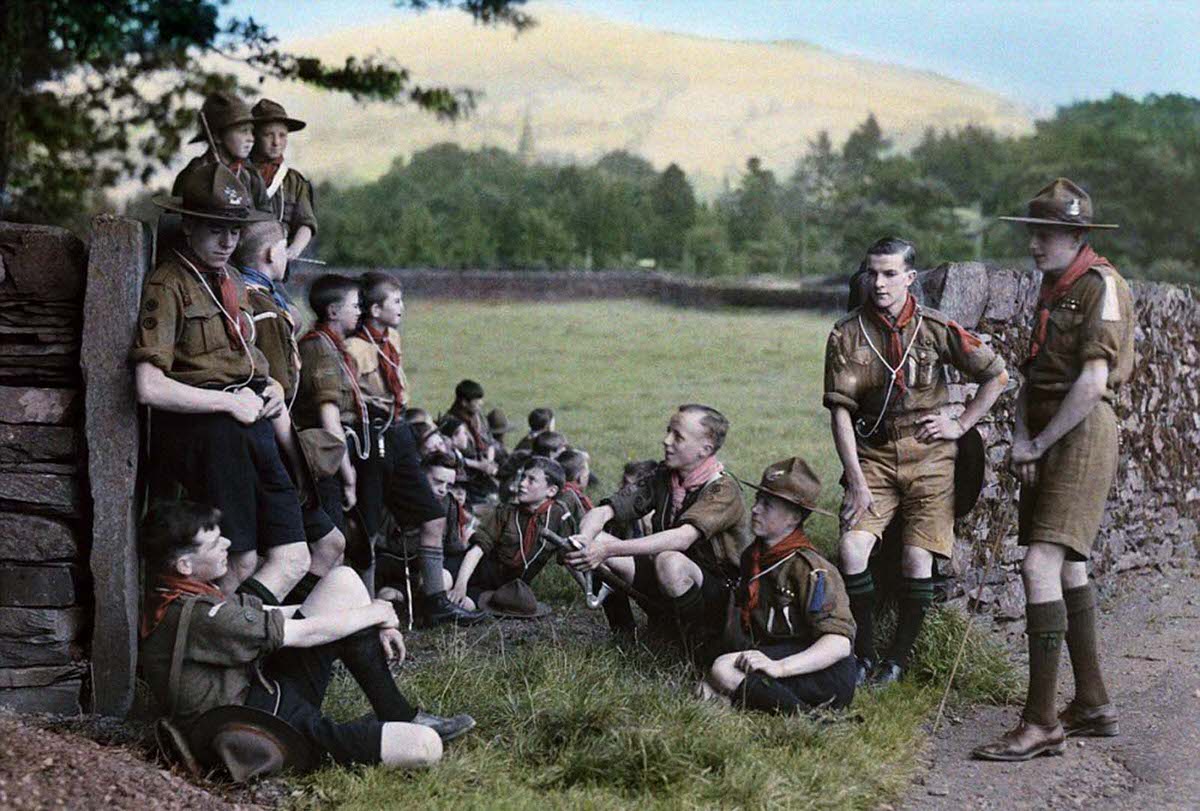National Geographic commissioned Clifton R. Adams to photograph the life in England in the late 1920s and early 1930s. Using potato starch to create color images, Adams captured the last of an England that was slowly slipping into modernity with his autochromes. As Adams began to record the region’s farms, towns, and cities, etc., he observed its inhabitants working and playing.
These color images were created using the Autochrome Lumière process. A coating layer allowed for capturing a color image because the gaps between the grains were filled with lampblack. As part of the image-taking process, light passed through the color filters, followed by the plate being processed to create positive transparency.
1920s Britain
The 1920s was a decade of contrasts. Following the end of the First World War, there was peace again, and prosperity with it. An economic and social transition was underway. Despite the depression, living standards generally rose. Electricity gradually replaced steam power. Petrol engines became the standard form of transportation.
A variety of early materials such as plastics were often used instead of basic metals, and manmade fibers, such as artificial silk (commonly referred to as art silk) were gradually replacing cotton and silk. As a result of the expansion of the chemical industry, new jobs were created, helping the economy to elude the dominance of heavy industry.
Role of Women in the 1920s
The role of women in Britain society was changing. After World War I, women over 30 who were householders were eligible to vote. The vote was extended to all females over 21 years of age by 1928. Despite this, some still viewed women as the decorative appendages of men with no purpose other than bearing children. Wartime employment opportunities opened up to ordinary working women. Their passion for the land, factories, and buses led them to work in all three.
School leaving age was increased to 14 in 1921 by the Education Act. Every child now received free state primary education beginning at age five; even the youngest children were expected to attend nine to four each day. Some students were still practicing writing in sand trays with sticks. As they became more skilled, they moved to slates and chalk. It was common for students to share books among groups of their peers, since paper and books were expensive. Additionally, students were taught country dancing, sewing, woodworking, and folk songs.
Below are some fascinating color photos by Clifton R. Adams that offer a glimpse into everyday life of Britain in 1928.
#1 A policeman directs buses in the intersection of Trafalgar Square, London.
#2 An English woman points pridefully to her farm cart, in Cambridgeshire, England. Wicks of Wisbech constructed horse-drawn caravans used by Romany families traveling throughout Britain.
#3 An informal portrait of a farmer and his cart, in Crowland, Lincolnshire. Decoy Farm is now the site of a recycling centre and a housing estate.
#4 A police constable passes the day with farmers gathering hay, in Lancashire.
#5 Two women rest for lunch in a Lancashire hayfield.
#6 A young girl plays in the sand at Sandown, Isle of Wight.
#7 Actors dress for a pageant as Britannia and her knights.
#8 The characters of Britannia and her colonies and dependencies, in Southampton, Hampshire.
#9 Two women buy ice cream from a vendor out of his converted car, in Cornwall. Kelly’s ice cream is still in production today.
#10 A woman sticks her head out of her bridge house window, in Ambleside, Lake District, Cumbria, England.
#11 A war veteran sells matches on the street, in Canterbury, Kent.
#12 A young girl sells artificial flowers for charity on Alexandra Day, in Kent.
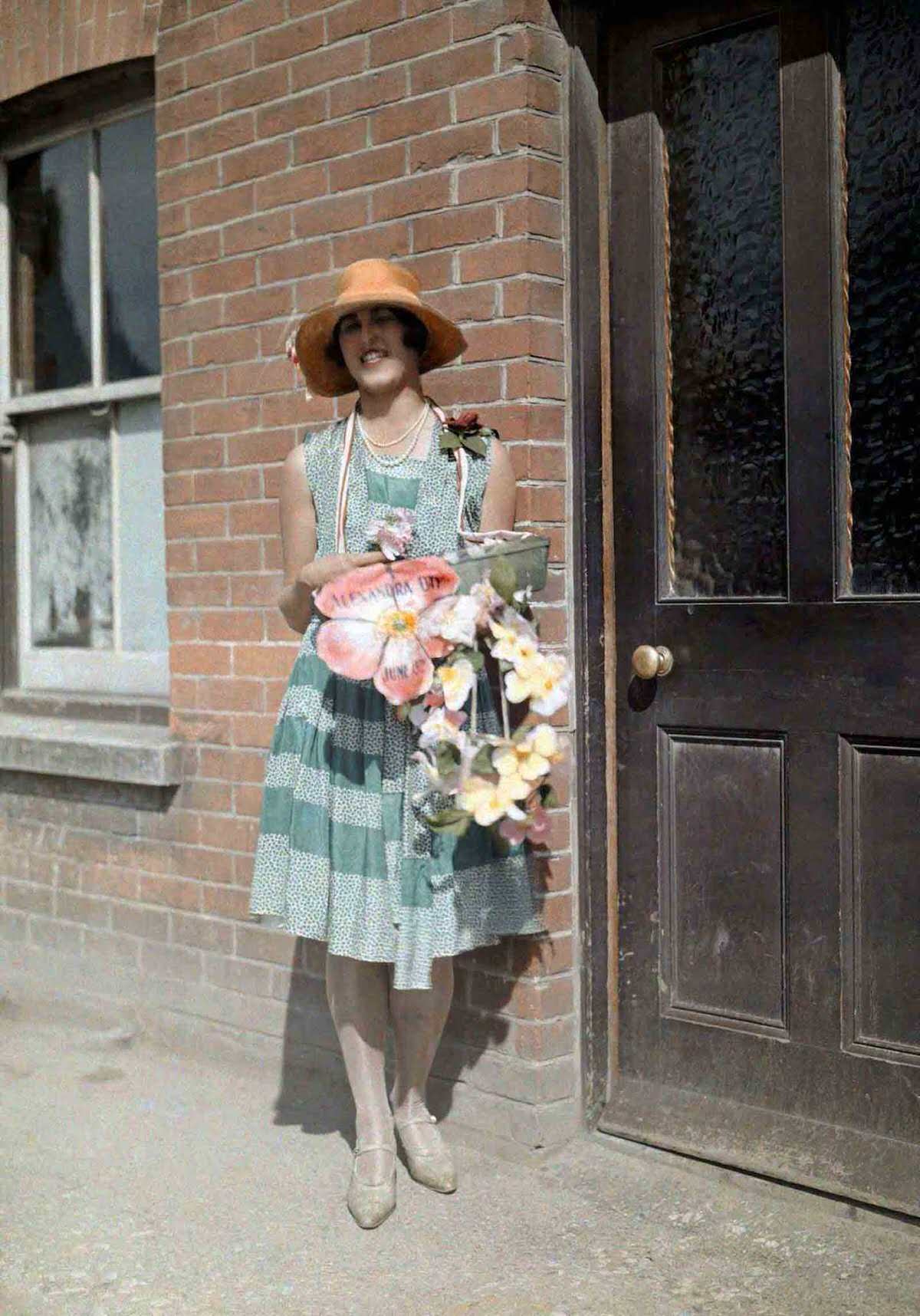
The first Alexandra Rose Day was held in 1912; it commemorated the arrival in Britain of Princess Alexandra of Schleswig-Holstein-Sonderburg-Glücksburg, from Denmark, in 1862. She was betrothed to Prince Edward, later King Edward VII, and they married the next year. Her admirers wished to mark the 50th anniversary of her arrival and she proposed marking it by the sale of paper roses in aid of her favourite charities. The day became an annual occasion.


